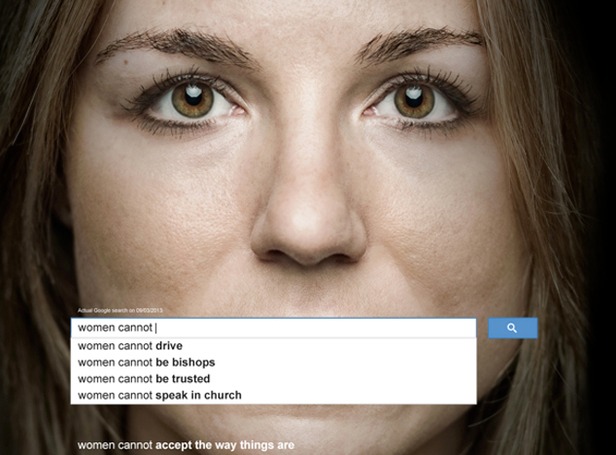Molly O’Leary | Contributing Writer
It being my second year in Trinity, I have decided that it is probably time I venture out of the comfort of non-aggressive intelligent discourse and actively engage with misogyny online.
Recently, when browsing the internet, I was roused out of my usual content vine-appreciating state into a trembling single-minded fury, the likes of which I had not experienced since that morning when a stranger had asked me to “get my tits out”. You know the feeling: one minute you’re trundling along, battling with the daily sexism you experience, but doing ok, overcoming it and perhaps even beginning to feel that, at least in the liberal university sphere you inhabit, things are beginning to improve, people’s attitudes towards women and sex and gender are changing and that maybe, just maybe, you’ll feel like an equal some day… and that’s when it happens: the horror of the misogynistic article.
that’s when it happens: the horror of the misogynistic article
So that others do not have to suffer as I did, I decided to compile a list of questions to help readers identify a misogynistic article when they see one :
Is the purpose of the article to express hatred, disgust or horror towards women? Some misogynistic articles’ entire purpose is to express hatred of women. Such articles can sometimes be identified straight away by their headlines, for example: does it use a word such as “horror” in relation to women or an offensively categorized group of women? The language used in the body of article can also be an indicative, for example: it might describe women’s behaviour as “detestable”.
Unfortunately, it is not until one has completed the article that it becomes entirely clear that it has no other purpose than to express hatred of women, as it has done nothing apart from describing women hatefully.
Is the article unusually focused on women’s appearance? The fact that an article is focused on women’s appearance does not necessarily entail that it is misogynistic. However, the hallmark of the misogynistic article is its unusual emphasis on women’s appearance, the level of which leaves an uneasy feeling in the stomach of the non-sexist reader. Women’s clothing and make-up are frequently described in minute detail. These descriptions are bizarre but they are not arbitrary. Their motivation is a disgust of women’s sexuality and their purpose is to impose a restrictive standard on women’s behaviour. Does the article offer condescending advice to women?
its real purpose becomes clear: to impose that good old restriction on women’s behaviour
Some misogynistic articles are written as pieces of advice to women. In this way the author attempts to disguise their real motive by pretending to be concerned for women’s welfare. An article might alternate between giving advice to women and insulting them. In such cases the disguise is particularly ineffective: as the motherly tone sits in stark contrast to the bitterness it is surrounded by. If the tone of the rest of the article does not serve as an adequate give-away, the insincerity of the author’s concern can usually be identified by the content of the advice. It frequently relates to women’s sexual behaviour or appearance (see above) and in these cases its real purpose becomes clear: to impose that good old restriction on women’s behaviour.
Does the article express disapproval of women’s sexuality? While some misogynistic articles might tacitly express a disapproval of women’s sexuality in the form of advice, others are less subtle and openly deplore women doing sexual things. Such articles might morally condemn or mock women for engaging in sexual acts. Look out particularly for articles morally condemning women’s sexual behaviour while barely mentioning the male participant(s). Notice how the culpability for the allegedly immoral act is entirely acquired by the female.
Does the article assume that women only do things to please men? Some misogynistic articles assume that women’s only purpose in life is to please men. This attitude might be expressed openly by a statement to the effect that women do what they do “for men”, or indirectly by offering advice to women so that they can become more pleasing to men (yay). The article might also purport to have such an in depth understanding of women’s psychology so as to know who women idolize. It might make the following deduction: given that women aim to please men, we aspire to be like other women who are sexier than us (like Katy Perry, for instance).
Does the article dehumanize women? Particularly aggressive misogynistic articles talk about women as if they are less than human. They use animalistic language to describe women, referring to us as “creatures” or “gnarling”. Describing women in this way allows the author to obscure the immorality of their attitudes. If women are dehumanized, they can be talked in as cruel a way as the author sees fit. This is a particularly dangerous species of misogyny because language is extremely powerful. Talking about women as less than human is not far from treating them as such.
If women are dehumanized, they can be talked in as cruel a way as the author sees fit
Finally is the article entitled “Horror of the Hunzos”? Although the majority of misogynistic articles only contain some of the above features, the aforementioned article actually has them all. All of the above quotations are extracts from it. Indeed, if you are serious about misogynistic article identification, I would recommend reading it. It is an excellent exemplar of the genre and shows just how thorough, determined and ruthless the misogynistic article can be.







